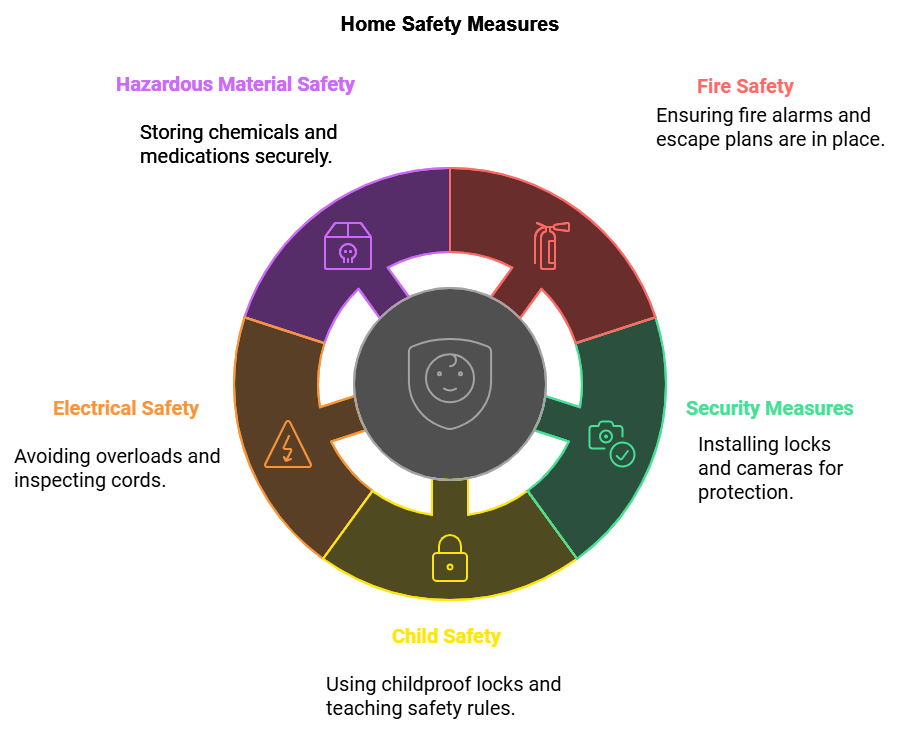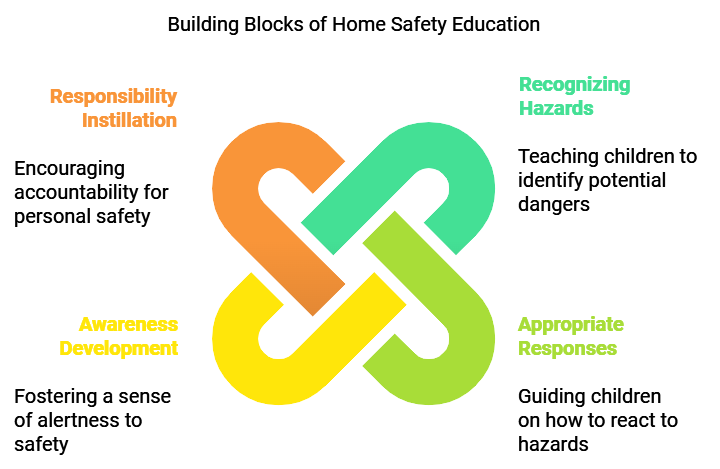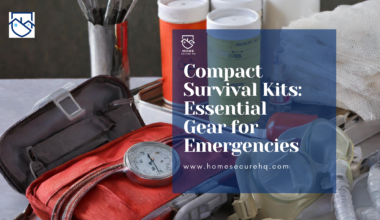Keeping our homes safe is something we often take for granted until something unexpected happens. If it is preventing fires, deterring intruders, or safeguarding children from accidents, being proactive about home safety rules is essential.
Below, we’ll explore 10 home safety rules that, when practiced consistently, can help protect your home, loved ones, and property. With these practical tips, you’ll be empowered to create a safe and secure environment for everyone who lives there.
10 Essential Safety Rules for Household
These home safety rules, when practiced, will ensure your home and family are protected.

1. Lock Doors and Windows Regularly
It may sound obvious, but one of the easiest ways to keep your home safe is by locking up. Many break-ins happen during the day, when intruders assume no one’s around. Make it a habit to lock all doors and windows, even if you’re just running out for a few minutes.
If you have multiple entrances or windows on the ground floor, double-check them all. It’s a simple routine that can go a long way in keeping your home secure.
2. Install Smoke and Carbon Monoxide Detectors
Smoke and carbon monoxide (CO) detectors are life-saving devices that give you an early warning in case of fire or CO leaks. Place smoke detectors on each floor, especially near bedrooms and in the kitchen. For CO detectors, install them near sleeping areas and anywhere there’s a fuel-burning appliance.
However, testing the alarms monthly and changing the batteries annually (maybe on a memorable date like the start of daylight saving time) will keep them in working condition when you need them most.
3. Create and Practice an Emergency Escape Plan
Planning an emergency escape route is crucial for any household. Walk through your home with family and identify two exits from each room. Choose a safe meeting spot outside where everyone can gather if there’s an emergency.
That being said, Practice the escape drill a couple of times a year so everyone knows what to do. It’s especially important for children to get comfortable with the plan and for everyone to stay calm if the need arises.
4. Use Fire Extinguishers and Learn How to Operate Them
Fire extinguishers are invaluable tools to have in the kitchen and other key areas of your home. But simply having them isn’t enough. Everyone should know how to use them. Remember the acronym PASS: Pull the pin, Aim at the base, Squeeze the handle, and Sweep side to side.
Consider having a small instructional session with family members to ensure everyone’s prepared to handle a fire quickly and confidently.
5. Keep Hazardous Items and Tools Out of Reach
Household items like cleaning supplies, chemicals, and tools can be dangerous if left out in the open. Store these items in high or locked cabinets where kids and pets can’t reach them. In the garage or shed, secure tools like hammers, screwdrivers, and ladders.
Moreover, this not only helps prevent accidents but also denies potential intruders access to items that could aid them in breaking in.
6. Install Security Cameras and Maintain Clear Sight Lines
Security cameras around entry points like your front door, back door, and garage can discourage intruders from attempting to enter. Cameras connected to your phone add an extra layer of convenience, allowing you to monitor your home remotely.
Additionally, keep bushes and trees trimmed near windows to maintain clear sight lines. This improves visibility around your property, making it harder for anyone to hide close to your home.
7. Practice Safe Heating and Electrical Habits
Space heaters and overloaded outlets are common fire hazards. Keep heaters at least three feet away from flammable objects like curtains and furniture, and turn them off when you’re not in the room.
Plus, avoid plugging too many appliances into one outlet, and be mindful of extension cord use. Regularly check cords for signs of wear like fraying or exposed wires to reduce the risk of electrical fires.
8. Keep Emergency Contacts Handy

Having a list of emergency contacts, like the police, fire department, and a neighbor’s phone number, can be a lifesaver. Post this list in a central location that everyone can easily see, especially children.
While cell phones are convenient, a printed list ensures quick access for everyone, which can make a big difference in a crisis.
9. Keep Walkways and Stairs Clear of Clutter
Trips and falls are common household accidents, especially in homes with young children or older adults. Make it a habit to keep walkways, stairways, and high-traffic areas clear of clutter like toys, shoes, or other items.
Regularly tidying up these areas not only prevents accidents but also keeps your home organized and safe for everyone.
10. Educate Children on Basic Home Safety

Teaching kids about home safety is just as important as locking doors or installing alarms. Go over basics like not opening the door to strangers, recognizing smoke or CO alarms, and knowing how to call 911.
Start with simple, age-appropriate instructions, and reinforce them over time. Practicing these routines can help children feel more confident and prepared, knowing what to do in different situations.
Final Thoughts
Keeping your home safe isn’t about making it feel like a fortress; it’s about creating a protected environment that allows you and your family to enjoy peace of mind.
Additionally, by consistently locking doors, testing alarms, keeping emergency contacts nearby, and educating family members on basic safety practices, you create a secure environment without much hassle and address different vulnerabilities that may arise, from fire hazards to intrusions and everyday accidents.
Moreover, Each small action adds to a stronger, safer home, where you and your loved ones can feel protected and prepared. Make these steps part of your daily habits, and enjoy the peace of mind that comes with a well-protected home.








12 comments
Some genuinely wonderful work on behalf of the owner of this web site, dead great subject material.
Just a smiling visitor here to share the love (:, btw outstanding design and style. “Individuals may form communities, but it is institutions alone that can create a nation.” by Benjamin Disraeli.
Thank you 😊
I like this web site so much, saved to my bookmarks. “Nostalgia isn’t what it used to be.” by Peter De Vries.
hi!,I like your writing very so much! share we be in contact extra approximately your post on AOL? I need a specialist on this house to solve my problem. Maybe that is you! Looking forward to look you.
Needed to post you the little remark to be able to say thanks once again relating to the awesome methods you have contributed above. It was certainly seriously generous with you to offer unreservedly what a number of us would’ve made available for an ebook to end up making some cash for themselves, precisely given that you might have done it in case you decided. The good ideas in addition acted as the good way to fully grasp that most people have similar passion like my very own to know the truth more concerning this problem. Certainly there are a lot more fun moments ahead for those who go through your blog.
Thank you soo much
wonderful points altogether, you simply gained a new reader. What would you suggest about your post that you made a few days ago? Any positive?
I was recommended this web site by my cousin. I’m not sure whether this post is written by him as no one else know such detailed about my problem. You’re wonderful! Thanks!
Thank you soo much
whoah this blog is great i love studying your articles. Stay up the great work! You realize, many people are looking round for this info, you could aid them greatly.
Thank you
Comments are closed.